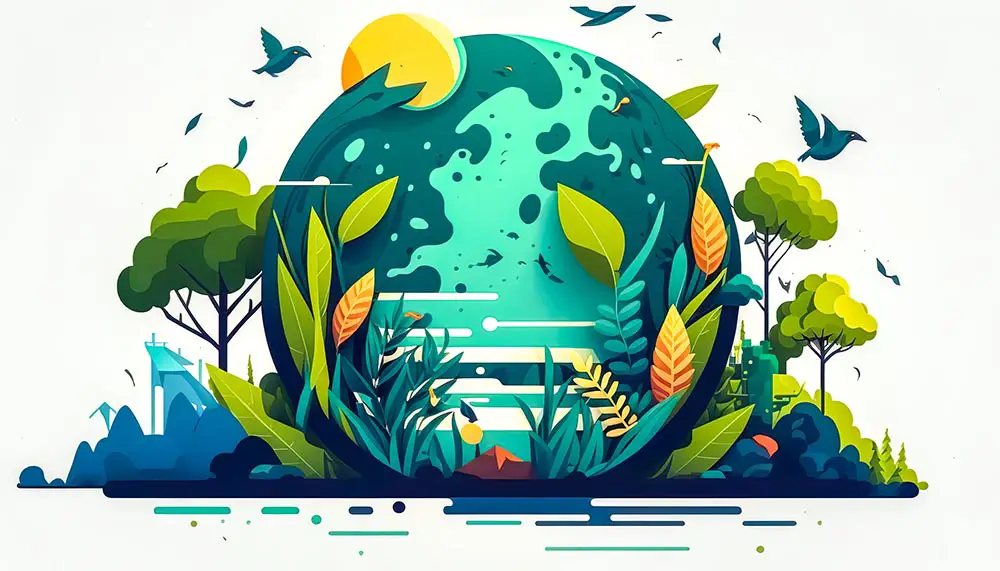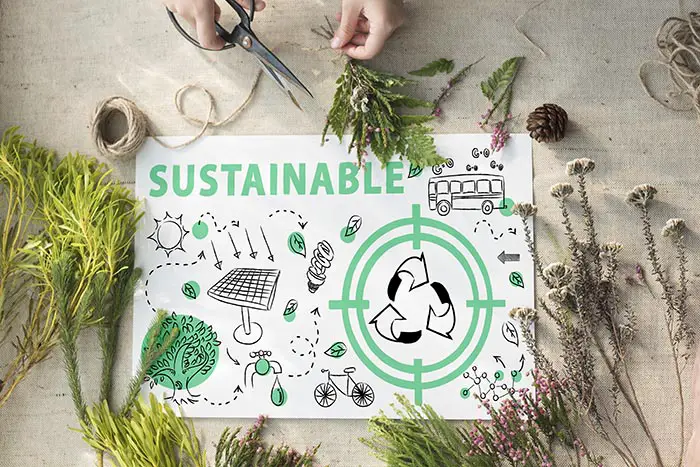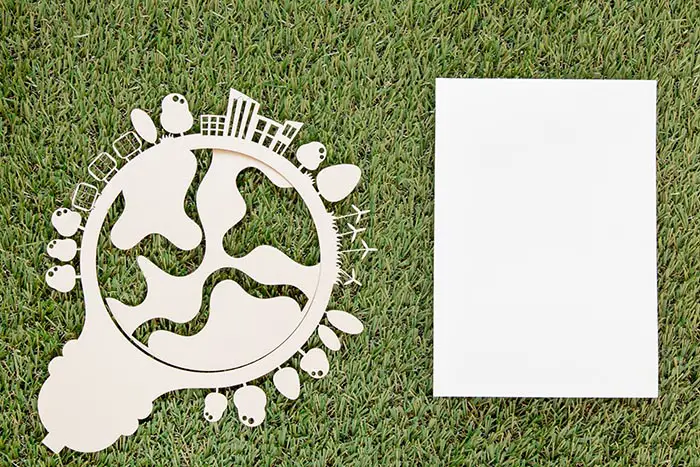In 2024, designers should be aware of current graphic design trends for 2024 and essential tendencies that shape the modern world.
One of these tendencies is sustainability. This article delves into what sustainability is, why it is so important, and how to integrate it into your design processes. Read on to discover the basics of sustainable graphic design!
Why is it important to create eco-friendly graphics?
Sustainability is the practice of using resources in a smart and efficient way so that future generations can still meet their own needs. Sustainable practices aim to minimize negative environmental impacts, such as pollution, deforestation, and ozone depletion; promote social responsibility; and ensure economic viability.

Now, let’s define sustainable design and eco-friendly graphics. These are graphic design practices that prioritize environmental sustainability and minimize negative impacts on the planet. This includes many aspects of the design process, from material selection to production methods.
Today, sustainability is a critical issue acknowledged both by companies and consumers. In the past 12 months, there has been an increase in consumers saying they have adopted a more sustainable lifestyle across 11 of the 23 sustainable behaviors tracked in Deloitte’s research. Furthermore, sales of products making ESG-related claims grow better than those who don’t make such claims. That’s why many industries, design included, work to implement more sustainable practices.
The main impact of sustainable graphic design is the reduction of environmental impact throughout the entire design process. Sustainable graphic design strives to minimize environmental harm and create a more responsible and ethically conscious approach within the design industry.
Graphic design is a discipline focused on delivering visual messages to a target audience. Sustainable graphic designers can lead by example by prioritizing eco-friendly, recyclable materials, and reducing waste during work. They can also help raise awareness—for instance, by creating a series of materials that promote sustainability.

5 green design practices for creators
If you want to create green graphic designs, here are five essential practices to help you.
Consciously choosing materials and printing techniques can help you make your work process more environmentally responsible. For instance, you can use recycled or responsibly sourced materials to minimize environmental impact. You can also choose printing techniques that reduce waste (such as digital printing) over traditional methods, and consider eco-friendly alternatives like soy-based inks.
When you choose a digital design over a printed one, you end up either minimizing the use of physical materials such as paper, ink, and other supplies or not using them at all. This reduces waste usually caused by traditional design processes. Furthermore, digital designs can be easily edited, shared, and archived without excessive printing, which makes your work process even more sustainable.
To make your workflow more energy-efficient, choose appropriate design devices (such as laptops and monitors) that can work without constant charging and consume less energy. For instance, MacBooks can run for 6–8 hours without extra charging, which means you won’t be using any additional electricity and will save more energy.
Even if digital designs are your main priority, chances are you’ll still need to create physical ones someday. After all, people need packaging for certain products. In this case, focus on simplicity and functionality to avoid the overconsumption of materials. Consider the entire life cycle of a design, from creation to disposal, and find ways to repurpose or recycle used materials to reduce overall waste.
You can also use design as a tool for advocacy and education. To achieve this, try integrating informative elements highlighting environmental issues or solutions, such as icons or logos showing that a product has been made using recycled materials. This will help a sustainable-oriented audience find the products they are looking for. At the same time, it can educate people about the importance of sustainability.
Environmentally sustainable product packaging design creates packaging that minimizes negative environmental impacts throughout its life cycle. To achieve this, designers use eco-friendly materials, optimize packaging size and weight for efficient transportation, and promote recycling or composting to reduce waste.

Sustainability is more than just a trend these days—it is also an important issue that many industries, design included, strive to address. Adopting green design practices can help designers make their workflow more sustainable and contribute to making this world a better, greener place.
##



